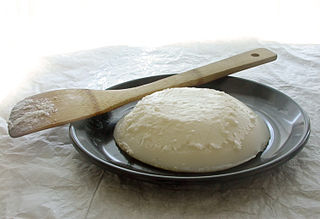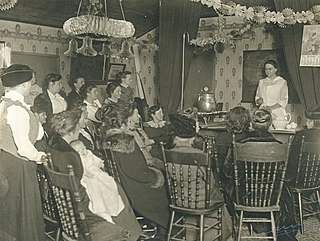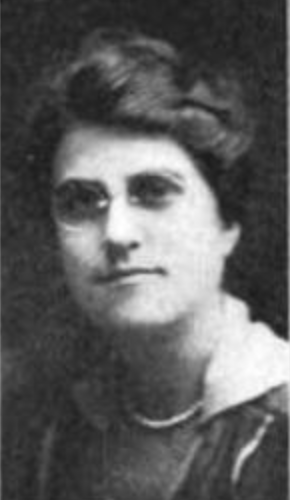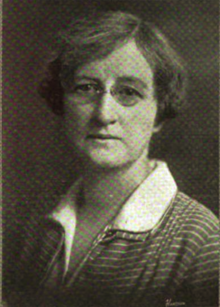
Cooking, also known as cookery or professionally as the culinary arts, is the art, science and craft of using heat to make food more palatable, digestible, nutritious, or safe. Cooking techniques and ingredients vary widely, from grilling food over an open fire, to using electric stoves, to baking in various types of ovens, reflecting local conditions.

Homemaking is mainly an American and Canadian term for the management of a home, otherwise known as housework, housekeeping, housewifery or household management. It is the act of overseeing the organizational, day-to-day operations of a house or estate, and the managing of other domestic concerns. A person in charge of the homemaking, who is not employed outside the home, in the US and Canada, is called a homemaker, a term for a housewife or a househusband. Historically the role of homemaker was often assumed by women. The term "homemaker", however, may also refer to a social worker who manages a household during the incapacity of the housewife or househusband. Home health workers assume the role of homemakers when caring for elderly individuals. This includes preparing meals, giving baths, and any duties the person in need cannot perform for themselves.

The United States Department of Agriculture (USDA) is an executive department of the United States federal government that aims to meet the needs of commercial farming and livestock food production, promotes agricultural trade and production, works to assure food safety, protects natural resources, fosters rural communities and works to end hunger in the United States and internationally. It is headed by the secretary of agriculture, who reports directly to the president of the United States and is a member of the president's Cabinet. The current secretary is Tom Vilsack, who has served since February 24, 2021.

The Agricultural Research Service (ARS) is the principal in-house research agency of the United States Department of Agriculture (USDA). ARS is one of four agencies in USDA's Research, Education and Economics mission area. ARS is charged with extending the nation's scientific knowledge and solving agricultural problems through its four national program areas: nutrition, food safety and quality; animal production and protection; natural resources and sustainable agricultural systems; and crop production and protection. ARS research focuses on solving problems affecting Americans every day. The ARS Headquarters is located in the Jamie L. Whitten Building on Independence Avenue in Washington, D.C., and the headquarters staff is located at the George Washington Carver Center (GWCC) in Beltsville, Maryland. For 2018, its budget was $1.2 billion.
The United States National Agricultural Library (NAL) is one of the world's largest agricultural research libraries, and serves as a national library of the United States and as the library of the United States Department of Agriculture. Located in Beltsville, Maryland, it is one of five national libraries of the United States. It is also the coordinator for the Agriculture Network Information Center (AgNIC), a national network of state land-grant institutions and coordinator for the U.S. Department of Agriculture (USDA) field libraries.

Nutritional yeast is a deactivated yeast, often a strain of Saccharomyces cerevisiae, that is sold commercially as a food product. It is sold in the form of yellow flakes, granules, or powder and can be found in the bulk aisle of most natural food stores. It is popular with vegans and vegetarians and may be used as an ingredient in recipes or as a condiment.

Marjorie Husted was an American home economist and businesswoman who worked for General Mills and was responsible for the success and fame of the brand character Betty Crocker. Husted wrote Betty Crocker's radio scripts and was her radio voice for a time.

Lard is a semi-solid white fat product obtained by rendering the fatty tissue of a pig. It is distinguished from tallow, a similar product derived from fat of cattle or sheep.

Duchess potatoes consist of a purée of mashed potato, egg yolk, and butter, which is forced from a piping bag or hand-moulded into various shapes which are then baked in a high temperature oven until golden. They are typically seasoned similarly to mashed potatoes with, for example, salt, pepper, and nutmeg. They are a classic item of French cuisine, and are found in historic French cookbooks.
The history of USDA nutrition guidelines includes over 100 years of nutrition advice promulgated by the USDA. The guidelines have been updated over time, to adopt new scientific findings and new public health marketing techniques. The current guidelines are the Dietary Guidelines for Americans 2015–2020 and have been criticized as not accurately representing scientific information about optimal nutrition, and as being overly influenced by the agricultural industries the USDA promotes.

Mildred Brown "Brownie" Schrumpf was an American home economist, food educator, and author. Named the "Unofficial Ambassador of Good Eating" by the Maine Department of Agriculture, she wrote a weekly food column for the Bangor Daily News from 1951 to 1994 promoting traditional Maine recipes. She was the main proponent of the claim that the chocolate brownie was invented in Bangor. She was inducted into the Maine Women's Hall of Fame in 1997.
Esther Lord Batchelder was an American chemist, educator, and expert in the field of nutrition.

Katherine (Kate) Margaret Brew Vaughn was an American author, lecturer, home economics teacher, newspaper writer, and radio host.

Aunt Sammy was a fictional character created by the Bureau of Home Economics of the U.S. Department of Agriculture, for a popular radio show called Housekeepers' Chat. Its target audience was farm wives.

Home Demonstration Clubs were a program of the U.S. Department of Agriculture's Cooperative Extension Service. Their goal was to teach farm women in rural America better methods for getting their work done, in areas such as gardening, canning, nutrition, and sewing, and to encourage them to improve their families' living conditions. Home demonstration agents worked with local clubs to provide teaching services. The clubs also took on other education and charitable roles. These clubs survive into the present day.

The Secret History of Home Economics: How Trailblazing Women Harnessed the Power of Home and Changed the Way We Live is a 2021 nonfiction book by journalist Danielle Dreilinger. The book explores how different areas of skills, knowledge, and investigation were brought together under the umbrella of "home economics", and how the field's focus and reputation have changed over the decades in the United States.
Nessa Robins is an Irish food writer, blogger and photographer from County Westmeath, Ireland. She is best known for her award-winning cookbook and food blog. She also writes a monthly recipe column in the Irish Farmers Journal.
Greta Gray was an American architect, home economist, and academic. She was born September 30, 1880, in Covington, Kentucky and died January 18, 1961, in Cathedral City, California. She is noted as the most progressive early writer on the domestic environment.

Faith Robinson Lanman Gorrell was an American home economist and educator. She was director of the School of Home Economics at Ohio State University from 1929 to 1945.

Jessamine May Chapman Williams was an American home economist, nutritionist, and college professor. She was head of the home economics department at Sweet Briar College, head of the Food and Nutrition Department at the University of Arizona from 1914 to 1923, and head of the Foods and Nutrition department at Oregon State University from 1924 until she retired in 1944.

















